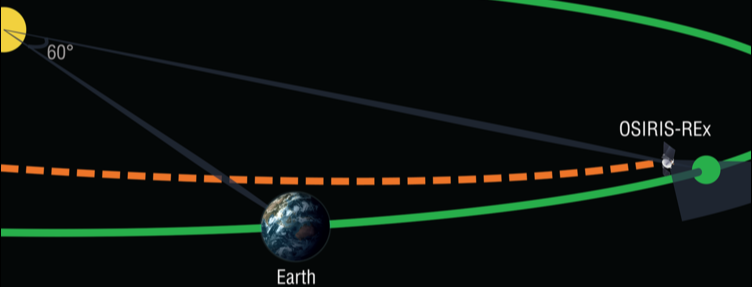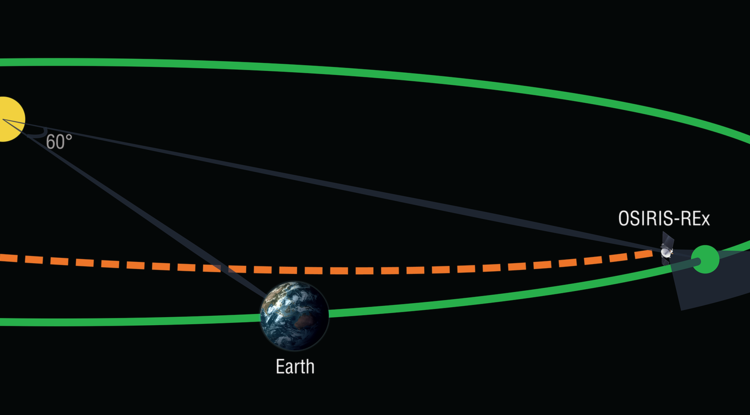Search party for Earth-Trojans starts in February 2017

The University of Arizona-led OSIRIS-REx mission will utilize the data collected during its two-year long mission to the Bennu asteroid in an attempt to search for elusive Earth-Trojan asteroids.
Trojan asteroids accompany the planets during their journey around the Sun. While doing so, they retain a stable point, 60 degrees in front or behind the planet, continuously leading or following in the same orbit, which ensures they don't collide with the planet. So far, Jupiter, Neptune, Mars, Venus, Uranus, and Earth are known to have Trojans.
Up to today, the scientists only managed to discover one Earth Trojan, named 2010 TK7, observed by NASA's NEOWISE project in 2010. For comparison, over 6 000 such asteroids are known to orbit along with Jupiter.
According to scientists, more Trojans should be orbiting alongside our planet. However, from Earth's point of view, they appear close to the Sun, which makes them hard to observe. The OSIRIS-REx spacecraft will be in ideal position to conduct observation in the mid-February 2017, as it will be based at the stable point in front of our planet.

The OSIRIS-REx spacecraft will start searching for Earth-Trojan asteroids while on its outbound journey to the asteroid Bennu, in February 2017. Earth-Trojans share an orbit with Earth while remaining near a stable point 60 degrees in front of or behind the planet. Image credit: OSIRIS-REx/UA
The search will start between February 9 and 20 when the NASA spacecraft is scheduled to activate its onboard camera. The asteroid search party will utilize the MapCam imager to scan the area of space thought to contain Trojans, during 12 days.
The OSIRIS-REx spacecraft is currently undergoing a seven-year-long journey with the goal of studying and collecting samples from Bennu to Earth. It is expected that the research will shed light on the formation of our solar system. Many of the planned observations will resemble the activities of searching for small rocks orbiting asteroid Bennu.
"The Earth-Trojan asteroid search provides a substantial advantage to the OSIRIS-REx mission. Not only do we have the opportunity to discover new members of an asteroid class, but more importantly, we are practicing critical mission operations in advance of our arrival at Bennu, which ultimately reduces mission risk," said Dante Lauretta, OSIRIS-REx principal investigator and professor of planetary science at the Lunar and Planetary Laboratory.
Featured image: The OSIRIS-REx spacecraft will start searching for Earth-Trojan asteroids while on its outbound journey to the asteroid Bennu, in February 2017. Earth-Trojans share an orbit with Earth while remaining near a stable point 60 degrees in front of or behind the planet. Image credit: OSIRIS-REx/UA

Commenting rules and guidelines
We value the thoughts and opinions of our readers and welcome healthy discussions on our website. In order to maintain a respectful and positive community, we ask that all commenters follow these rules:
We reserve the right to remove any comments that violate these rules. By commenting on our website, you agree to abide by these guidelines. Thank you for helping to create a positive and welcoming environment for all.